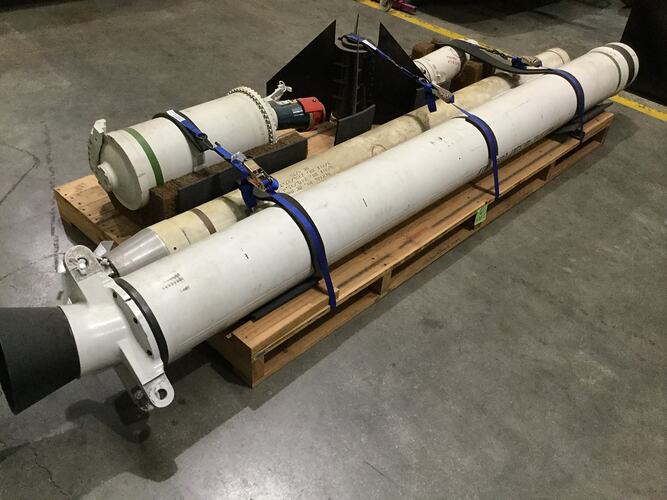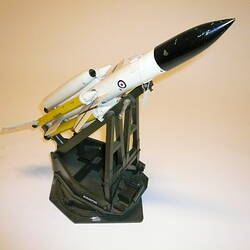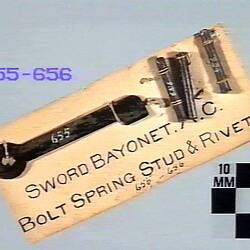Summary
The Gosling solid fuel propellant rocket was a single-nozzle booster rocket with an average thrust of 103.24kN and a burning time of 2.75 seconds. The Gosling was developed in Britain by the Bristol Aircraft Co. in the 1950s as a booster motor for the Bristol Ferranti Bloodhound surface to air missile which was developed initially as 'Red Duster'. The Bloodhound missile which was capable of speeds up to Mach 2.2 and a maximum altitude of 70,000 feet. Four Gosling booster rockets were designed to launch the Bloodhound rapidly with a pair of Bristol Thor ramjet engines providing thrust after the Goslings were expended. In 1957, a UK White Paper released by Defence Minister Duncan Sandys had declared that manned aircraft were obsolete and development should be focused on unmanned rockets and missiles.
Testing and development work on the Bloodhound was carried out at the Weapons Research Establishment (WRE) at Woomera, South Australia from 1953. From the late 1950s the Gosling was built at the Maribyrnong Explosives Factory, Victoria. In Australia, the Gosling was also fitted to the High Altitude Density (HAD) Cockatoo and Aero High sounding rockets which were used to conduct research into the upper atmosphere. This program ended in 1975.
The Museum's Gosling rocket motor was donated in 1994. It is fitted with an angled nozzle characteristic of the motors used on the Bristol Bloodhound missile. Those used on the HAD rockets were fitted with a straight nozzle. It is painted white with a single green band near the top of the outer casing. The Bloodhound was used by the RAAF between 1961 and 1968 by 30 Squadron at Williamtown, NSW with a detachment at Darwin between 1965 and 1968.
More Information
-
Collecting Areas
-
Acquisition Information
Donation from Australia: Defence Department, Maribyrnong Explosives Factory, by Oct 1994
-
Manufacturer
Australia: Defence Department, Maribyrnong Explosives Factory, Maribyrnong, Greater Melbourne, Victoria, Australia, 1960
-
Designer
-
Brand Names
-
Classification
-
Category
-
Discipline
-
Type of item
-
Overall Dimensions
3760 mm (Length), 257 mm (Outside Diameter)
248.6 KG (WHEN CHARGED)
-
Keywords
Australian Native Animals, Cockatoos, Dogs, Explosives Factories, Missiles, Rocket Motors


